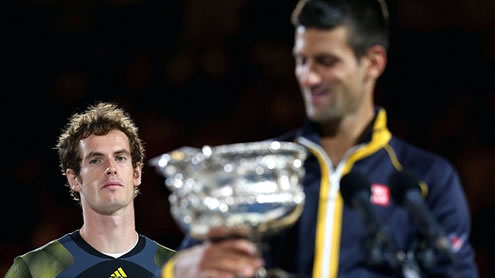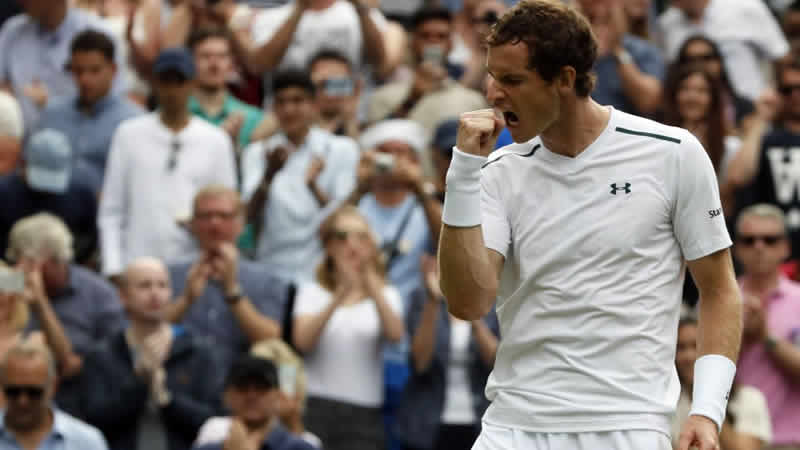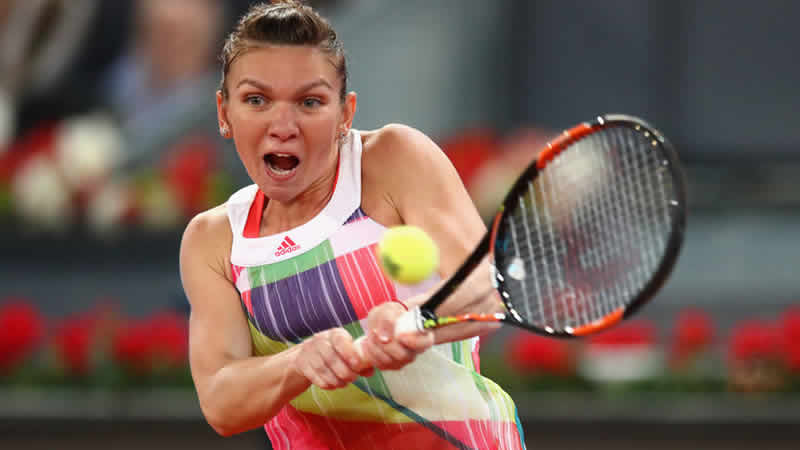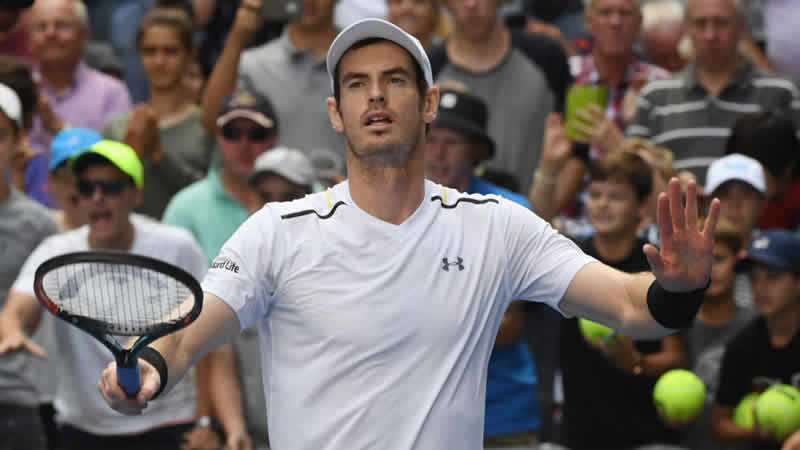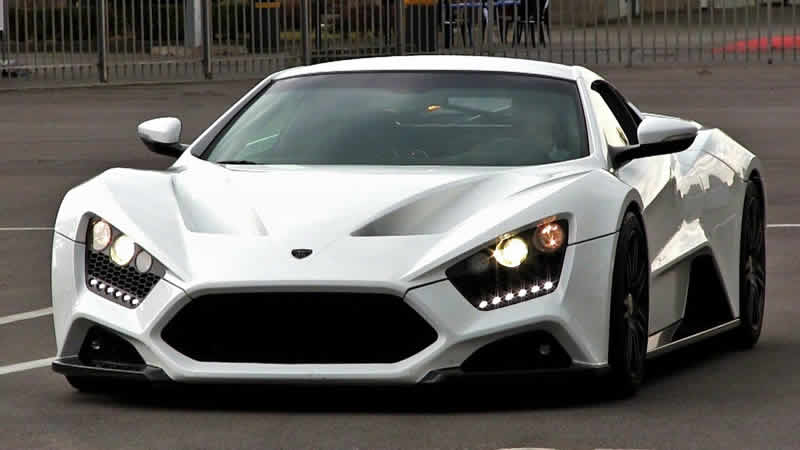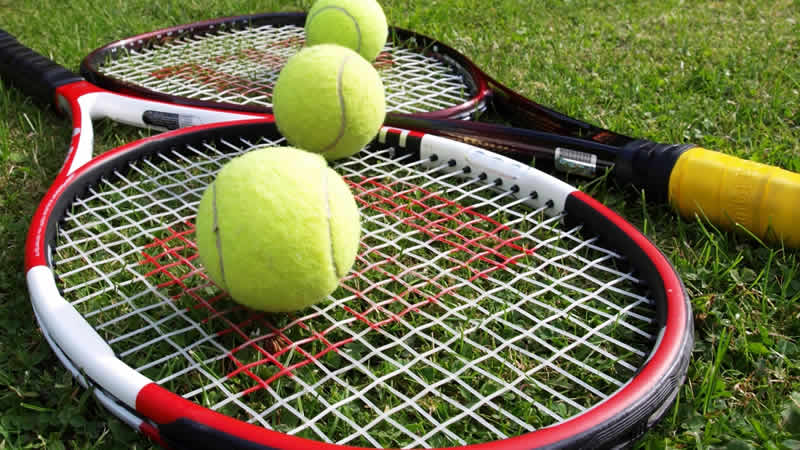Andy Murray is the second best tennis player in the world. Bummer. Turns out second, which must have looked so appealing when he was fourth, and then third, is still a pretty frustrating place to be.
More so, probably, because now Murray gets to stand next to more trophies but without being permitted to touch; he gets to give speeches, as the warm-up act for the winner; and he gets to be very polite about everybody, and have everybody be polite about him. You put up a good fight, you played your part in a great match. Let’s have a big hand for Andy. At that moment, second must suck way more than, say, 14th.
Of course, being second is nothing to be ashamed of, not when first is occupied by a champion as great as Novak Djokovic. He is the first player to win the Australian Open title three times in succession in the Open era and no player could have lived with him in the third and fourth sets of Sunday’s final. Certainly not Roger Federer, whom Murray beat in a Grand Slam for the first time on Friday. Federer is still technically the world No 2, but we suspect the balance of power shifted with Murray’s victory over him here. We suspect it is going to be Djokovic and Murray duking it out, across three of four Slams, anyway.
It took a player of extraordinary resilience to drag Djokovic to three hours and 40 minutes of tennis in Melbourne, and Murray is still the only player in the world who could have done it. Still second place though, isn’t it? Still another two weeks of not quite. The presumption will be Djokovic has an extra gear that Murray, try as he might, cannot find. It isn’t quite true. He found it in New York last year when he battered arguably the fittest player in the history of tennis to an exhausted standstill to win the US Open. He couldn’t quite get there again, though. As Djokovic kicked down the straight, Murray stumbled in his wake. To his credit he matched Djokovic for two-and-a-half sets and then the world No 1 edged inexorably away. The best in any sport will do that. On many occasions, at his peak, there were golfers who matched Tiger Woods for the best part of three rounds, until he began to move, inch by inch, up that leaderboard. Manchester United are rarely winning the league by 10 points at Christmas. Greatness shows, over time.
After roughly two-and-a-half hours here, one could not put a feather between Murray and Djokovic. But what followed showed the measure of a champion, capitalising on every mistake, each opportunity, no matter how minute. If Murray took a 0-30 lead and failed to close it out, Djokovic made him pay; if Murray lost focus even for one shot, he pounced. And the feather, that fateful feather, falling from the sky where a flock of seagulls screeched and swooped and occasionally spattered the paying customers below. At the fifth point of the second-set tiebreak, Murray was poised to deliver his second service when he noticed a small white feather floating through the air in his line of vision. He stopped, watched it fall, tried to pick it up, failed, was assisted by a ball girl, double faulted. Of course, Murray wasn’t truly knocked over by a feather in Melbourne, but the momentum did undergo a subtle shift with that dropped point.
The tiebreak having gone with serve until that moment, Murray won only a single further point and lost 7-3 to wipe out his first-set tiebreak advantage. The slow slide to the best supporting actor role had begun. In the eighth game of the next set, Murray was broken, the first time in the match a game had not gone with serve. Djokovic served out to love and what had been a drift in the Serb’s favour became a full-blown surge. He delivered 21 service games, and won them all. ‘It just comes down to a few points here and there,’ said Murray, and it was impossible to disagree. The point Djokovic won from the floor, for instance, or fighting for his life at the net; the point that brought a guttural groan of exertion from Djokovic and a perfect forehand to give it meaning. Djokovic’s noise levels grew as he found those extra reserves of strength and it was noticeable that Murray grew quieter as the game wore on, as if he no longer had the energy to waste on sound.
By then, Djokovic was sending him chasing all over court, left to right and back again and while Murray’s capacity to return against the odds barely faltered, it was increasingly obvious that his resistance was waning. That’s how it is for the second best. In the first set, Murray won 21 points to Djokovic’s 18, in the second Djokovic led Murray by two, but in the third — the set Murray lost 6-3 — there were 10 points between them. Djokovic was kicking for home, and Murray merely hobbled in his wake. Quite literally, by the end. When Murray went up to collect his consolation prize, he was moving as freely as an 80-year-old man, his right foot troubled by a painful-looking blister that had required medical treatment at the start of the third set. Removing his sock, Murray revealed the true cost of a meeting with Djokovic.
As the camera zoomed in, onlookers winced. When Murray said he was ready for pain, few realised that this was no casual euphemism. Playing Djokovic equates to physical, raw discomfort. He attacks your skin as much as your second serve. ‘I had two black toenails after the US Open,’ said Murray. ‘Blisters are sore, but you play through them. I’d say 90 per cent of the players here got through at least one match with the type of blisters I’m dealing with now.’ So it wasn’t the blisters, or the feather, or the Djokovic forehand with Murray leading 15-30 and desperate for a break that hit the net cord with a snap and fell, the right side, for the champion to level the score.
It wasn’t any one of these; it was all of them, and the fact that against Djokovic a point has to be won three, sometimes four times, before it is recorded in your favour on the scoreboard. Being second to a man of Djokovic’s incredible calibre is no dishonour; but it may prove very, very frustrating. For one fears it is a feeling that Andy Murray could be forced to endure rather a lot. – dailymail


